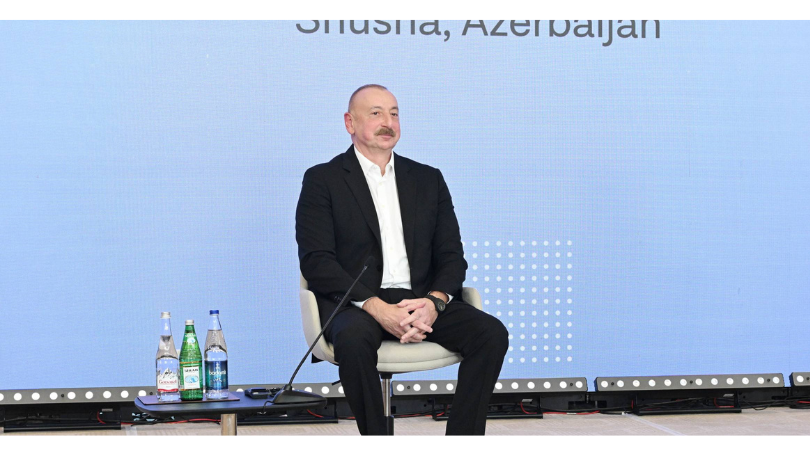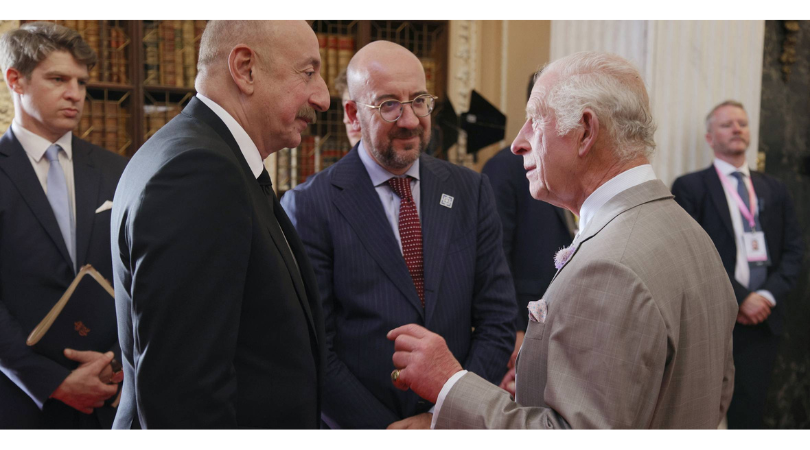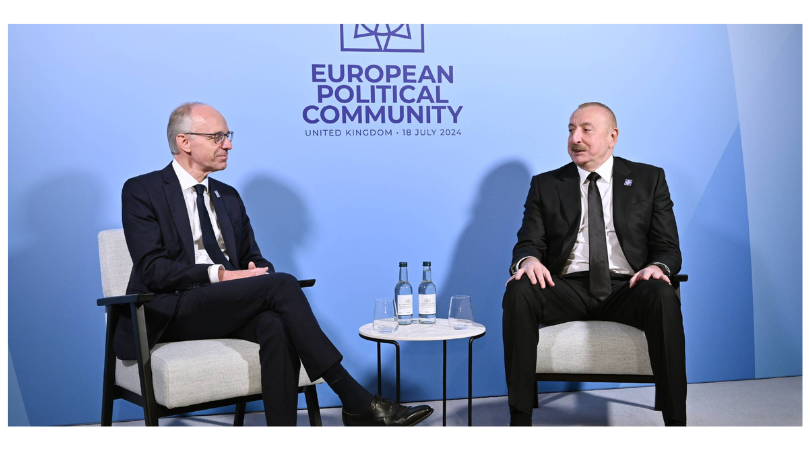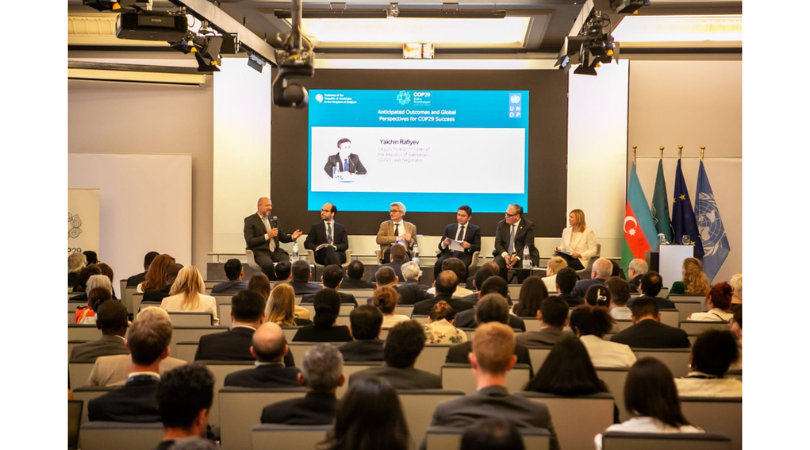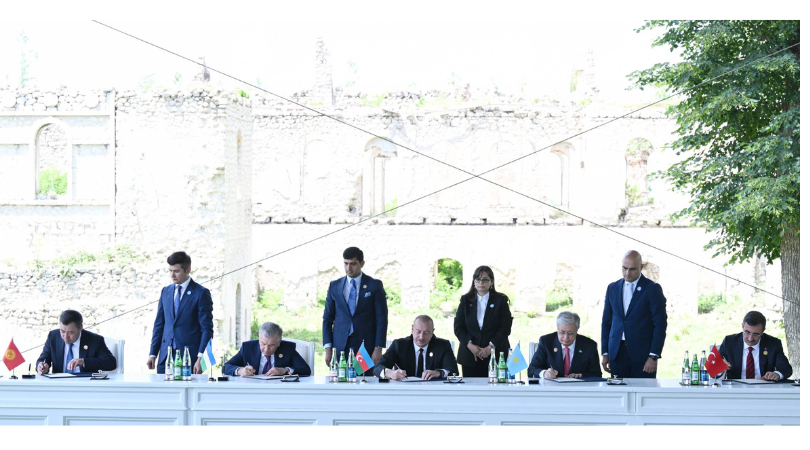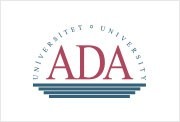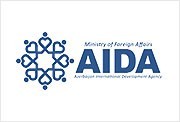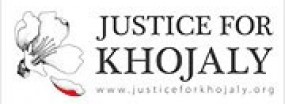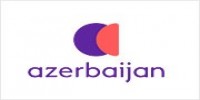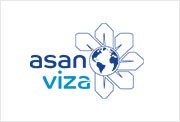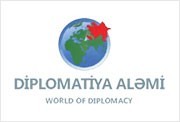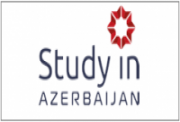Background information- INTENTIONAL POLICY AND PRACTICE OF ETHNIC CLEANSING BY ARMENIA TARGETED AT AZERBAIJANIS
Intentional policy and practice of ethnic cleansing BY armenia targeted at Azerbaijanis
Azerbaijan is proudly multicultural and is comprised of over fifty ethnic groups and many different religious traditions[1]. The President of the Republic of Azerbaijan, Ilham Aliyev, repeatedly has confirmed Azerbaijan’s commitment to core values of equality, diversity and respect for human dignity. As he stated in April 2021, “the preservation of ethnic and cultural diversity in our society, the promotion of a culture of coexistence based on mutual respect and trust, is one of the main priorities of Azerbaijan’s state policy”[2]. Azerbaijan have worked hard to build a society that strives to uphold the principles of international law, including by “promoting understanding between races and . . . building an international community free from all forms of racial segregation and racial discrimination”[3].
On the other hand, Armenia is a mono-ethnic country by design, primarily as the result of a decades-long, intentional policy and practice of ethnic cleansing targeted at Azerbaijanis. Armenia’s policy and practice of ethnic cleansing is rooted in a racist, ethno-nationalist ideology that openly proclaims the Armenian homeland must be preserved for Armenians alone[4]. Armenia’s actions in furtherance of this goal have been so chillingly effective that Armenia has gone from being home, in the late 1980s, to a population of hundreds of thousands of ethnic Azerbaijanis — previously the largest minority ethnic group in Armenia — to announcing to the CERD Committee in 2001 its status as a “mono-ethnic State”[5] and, by 2017, being unable to report any statistics on Azerbaijanis remaining in Armenia[6].
Armenia’s vision of the “Armenian homeland” reached beyond its own borders to the Garabagh region of Azerbaijan, prompting Armenia to expand its ethnic cleansing campaign into Azerbaijan’s sovereign territory via the unlawful use of force. As the Soviet Union disintegrated in the early 1990s, Armenia unleashed a war on Azerbaijan — referred to as the First Garabagh War — and seized not just the area formerly known as Daghlygh Garabagh or Nagorno-Karabakh, but also seven surrounding districts that at the time were home to a population that was 98 per cent ethnic Azerbaijanis and only 0.1 per cent ethnic Armenians[7].
The First Garabagh War took, and continues to take, a tragic human toll on Azerbaijan. Armenia ethnically cleansed more than 700,000 Azerbaijanis from the territory that it seized — comprising nearly 20 per cent of its overall territory. All told, including the more than 200,000 Azerbaijanis expelled from Armenia, nearly one million Azerbaijanis were forcibly displaced as a result of the war and occupation[8]. Thousands more Azerbaijanis were killed or injured, and several thousand disappeared without a trace. Armenia’s occupation also caused untold devastation to Azerbaijani lands, towns and heritage sites, which were systematically erased throughout the occupied territories. The very objective of the First Garabagh War by Armenia was to expand territory that would then be ethnically cleansed of Azerbaijanis so as to achieve a greater mono-ethnic state of Armenia. This was a war of aggression in pursuit of a policy of ethnic cleansing.
For years, Armenia has refused to comply with the four United Nations Security Council resolutions requiring “the immediate, complete and unconditional withdrawal” of Armenian forces from all the occupied territories of Azerbaijan[9], to engage in good faith with the Organization for Security and Co-operation in Europe (OSCE) Minsk Process for the peaceful resolution of the conflict, or to cease its continued military provocations. As a result of such provocations, the Second Garabagh War erupted over 44 days in September through November of 2020. The Trilateral Statement of 10 November 2020 — signed by Azerbaijan, Armenia and the Russian Federation — brought an end to that war, confirmed the liberation of Azerbaijan’s territory and laid the foundation for a sustainable peace in the region.
By moving to liberate its territories from Armenia’s illegal occupation, Azerbaijan was acting, or rather reacting, not out of ethnic animus but in response to a blatant and unlawful use of force against its people and its sovereign territory. The Second Garabagh War has always been made the focus of Armenia’s accusations against Azerbaijan, because Armenia tries to disregard its decades-long unlawful occupation of Azerbaijan’s territory, along with a systematic and organized campaign of ethnic cleansing and other brutalities visited on the people of Azerbaijan that preceded that war.
This applies equally to Armenia’s allegations relating to hate speech. Again, after three decades of war and occupation, it is no surprise that tensions between the two countries run high.
Azerbaijan is dedicated to upholding the core values protected by CERD and does not condone statements or actions that promote hatred or incite violence targeting Armenians as a national or ethnic group. Azerbaijan reaffirms its obligation to treat Armenian detainees in its custody in accordance with its obligations under CERD. Azerbaijan has commenced investigations and brought charges against Azerbaijani servicemen with respect to alleged crimes committed against Armenians during the Second Garabagh War. This is at the same time as Armenia ignores international calls to do the same for crimes committed against Azerbaijanis[10].
Armenia focuses its claims of incitement upon the Military Trophies Park, which opened in April 2021 to commemorate the lives lost in the long conflict between Armenia and Azerbaijan, and the liberation of Azerbaijan’s territory after almost 30 years of occupation. The park was never intended to promote anti-Armenian sentiment, which is contrary to Azerbaijan’s commitment to diversity as a multi-ethnic country. The few exhibits (mannequins and helmets) that are the focus of Armenia’s complaints regarding the Military Trophies Park have been permanently removed from the park.
Azerbaijani officials, including the President, have emphasized the importance of inclusion and mutual understanding in progressing towards a new era of peace and stability in the South Caucasus region. In signing the Trilateral Statement in November 2020, Azerbaijan committed to the return of displaced persons, regardless of their national or ethnic origin. President Aliyev has often repeated this commitment, as he stated with reference to the formerly occupied territories in October of last year:
“We think, and that was officially declared many times, that after the war is over, after occupational forces are withdrawn, Armenians and Azerbaijanis . . . will live side-by-side as in any other country with a multi-ethnic population and they will, I am sure, one day again will become good neighbors to each other.”[11]
[1] State Statistical Committee of the Republic of Azerbaijan, Population of Azerbaijan (2021), p. 21, available at https://www.stat.gov.az/source/demoqraphy/ap/?lang=en; Fazil Humbatli, “Multiculturalism in Azerbaijan: Multiculturalism in Architecture, Art and Social Life”, Azerbaijani Multiculturalism (2 Sept. 2016), available at https://multiculturalism.preslib.az/en_others-hpt5PRUsV3.html; Azerbaijani Multiculturalism, Azerbaijan: A Caucasian Mosaic (31 May 2013), available at https://multiculturalism.preslib.az/en_others-QfFHMrZu0B.html.
[2] President of the Republic of Azerbaijan, To the Orthodox Christian Community of Azerbaijan (30 Apr. 2021), available at https://en.president.az/articles/51335. See also “President Ilham Aliyev attended the opening ceremony of the 5th World Forum on Intercultural Dialogue”, Baku Process (3 June 2019), available at https://bakuprocess.az/president- ilham-aliyev-attended-the-opening-ceremony-of-the-5th-world-forum-on-intercultural-dialogue/.
[3] CERD Convention, preamble.
[4] See Application of the International Convention on the Elimination of All Forms of Racial Discrimination (Azerbaijan v. Armenia), Application instituting proceedings (hereinafter “Application of Azerbaijan”), paras. 5, 8, 30, 69.
[5] Republic of Armenia, Third and Fourth Periodic Reports of Armenia, UN doc. CERD/C/372/Add.3 (13 May 2002), para. 5.
[6] CERD Committee, Summary Record of the 2524th Meeting, document CERD/C/SR.2524 (2 May 2017), paras. 39, 43; Application of Azerbaijan, para. 6.
[7] See Parliamentary Assembly Council of Europe resolution 1416, The conflict over the Nagorno-Karabakh region dealt with by the OSCE Minsk Conference (2005), para. 2, available at https://pace.coe.int/pdf/054535b64a8c8db462e36c55fd37d805120c5634eefb777b2aa00391ceb35fda/resolution%201416.pdf.
[8] See United Nations General Assembly resolution 48/114, Emergency international assistance to refugees and displaced persons in Azerbaijan, document A/RES/48/114 (23 March 1994), p. 2.
[9] United Nations Security Council resolution 853 (1993); United Nations Security Council resolution 822 (1993); United Nations Security Council resolution 874 (1993); United Nations Security Council resolution 884 (1993); See also Note by the President of the United Nations Security Council, UN doc. S/26326 (18 Aug. 1993); Statement by the President of the United Nations Security Council, UN doc. S/PRST/1995/21 (26 Apr. 1995).
[10] See e.g. Nicola Murray, Deputy Head of the United Kingdom Delegation to the OSCE, “UK statement in response to OSCE Minsk Group Co-Chair statement” (17 December 2020), available at https://www.gov.uk/ government/news/uk-statement-in-response-to-osce-minsk-group-co-chair-statement; Amnesty International, “Armenia/Azerbaijan: Decapitation and war crimes in gruesome videos must be urgently investigated” (10 December 2020), available at https://www.amnesty.org/en/latest/press-release/2020/12/armenia-azerbaijan-decapitation-and-war- crimes-in-gruesome-videos-must-be-urgently-investigated/; United Nations Office of the United Nations High Commissioner for Human Rights, “Nagorno-Karabakh conflict: Bachelet warns of possible war crimes as attacks continue in populated areas” (2 November 2020), available at https://www.ohchr.org/EN/NewsEvents/Pages/DisplayNews. aspx?NewsID=26464; Parliamentary Assembly of the Council of Europe, Escalation of violence in Nagorno-Karabakh and the other occupied territories of Azerbaijan, Doc No. 13930, Explanatory Memorandum by Mr. Walter, rapporteur (11 December 2015), para. 42, available at http://assembly.coe.int/nw/xml/XRef/Xref-XML2HTML-en.asp?fileid= 22255&lang=en.
[11] President of Azerbaijan, “İlham Əliyevin ‘CNN International’ televiziya kanalının ‘Connect the World’ verilişinə müsahibəsi”, YouTube (9 October 2020), at 8:30–9:10, available at https://www.youtube.com/watch?v=QTjTcTW bnmg&t=370s; see also President of the Republic of Azerbaijan, Press Release: Nizami Ganjavi International Center’s web discussion themed “The South Caucasus: Regional Development and Prospective for Cooperation” was held with the participation of President Ilham Aliyev (20 May 2021), available at https://en.president.az/articles/51583.

